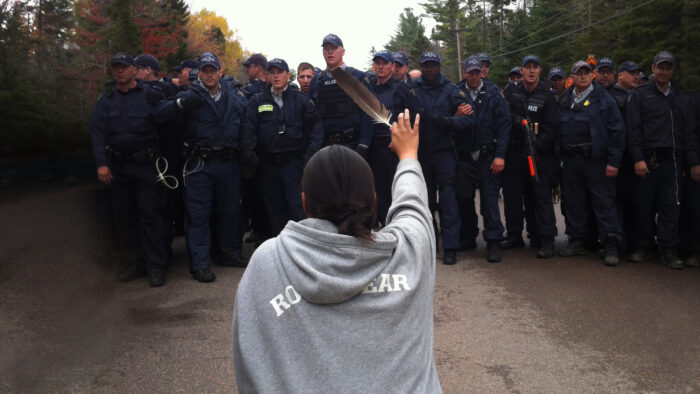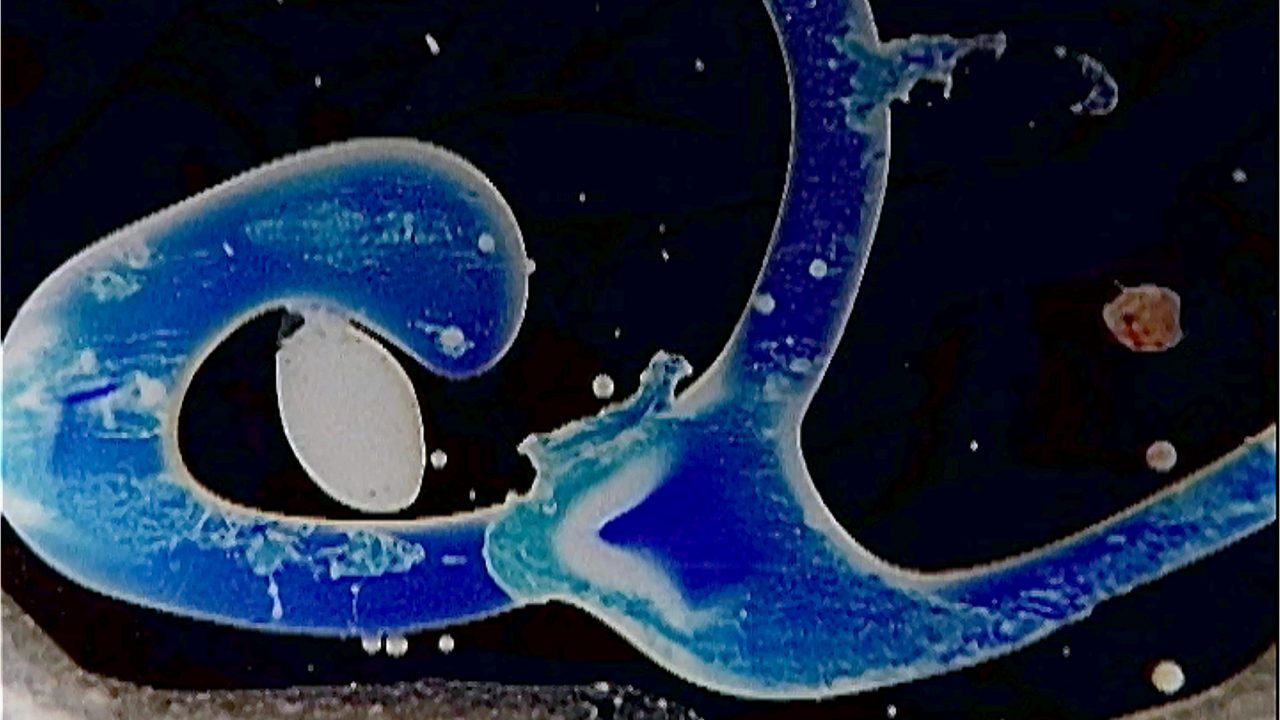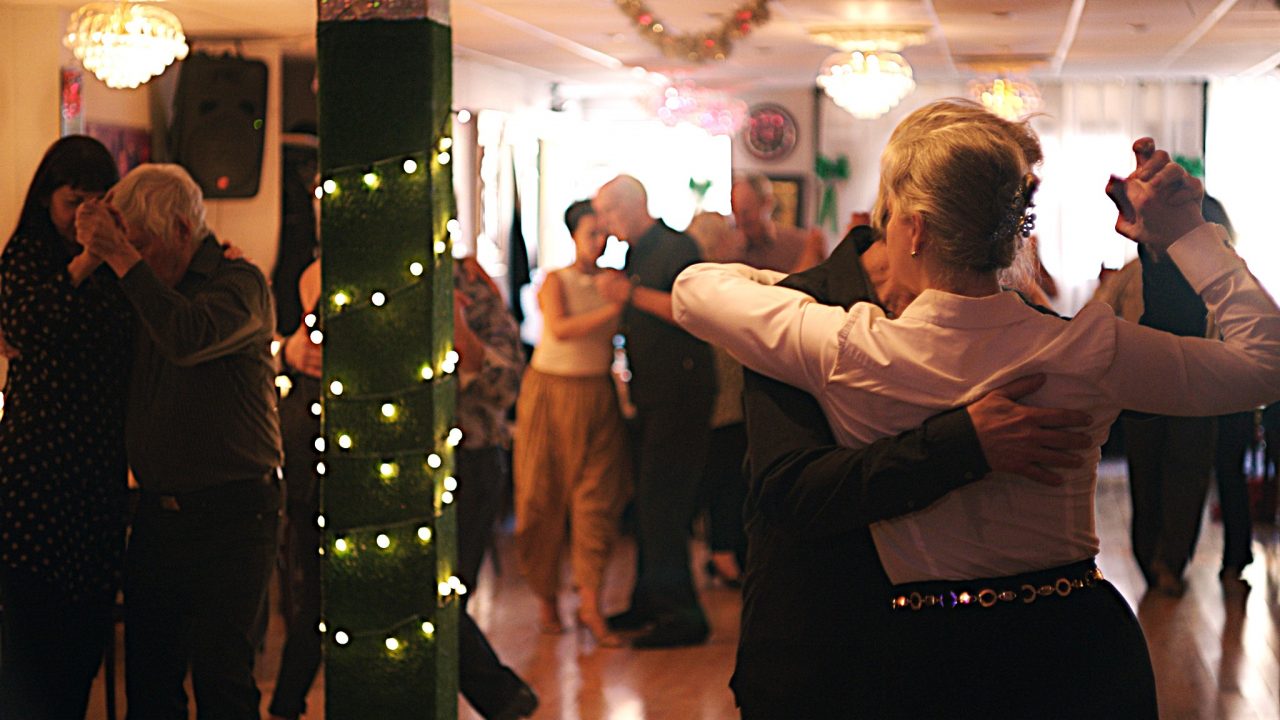
Activist Indigenous Cinema: Essential Viewing | Curator’s Perspective
Activist Indigenous Cinema: Essential Viewing | Curator’s Perspective
To mark National Indigenous History Month—and the June launch on nfb.ca of Ossie Michelin’s film Feather Fall (2024) and Chris Auchter’s The Stand (2024)—I want to draw your attention to five activist Indigenous documentaries you absolutely must see.
But before we get into discussing them, what is an activist film? I would define it as a socially engaged film that features a cause—whatever it may be—and speaks out against injustice. A film that takes sides and agitates for change. That’s the definition I’m using for the purpose of this blog post.
You Are on Indian Land (1969) by Michael Kanentakeron Mitchell[1]
In 1967, the NFB launched an innovative film-production program called Challenge for Change. Its purpose was to spotlight Canadian social problems and advocate for, well, change. One initiative that came out of it was a training program for Indigenous filmmakers, created in collaboration with the Ministry of Indian Affairs (today known as Crown-Indigenous Relations and Northern Affairs Canada). Called the Indian Film Crew (IFC), in the language of the day, the program started its work in spring 1968.
One of the first films produced by this team is a remarkable 37-minute documentary that takes us into the heart of a December 1968 protest by the Kanien’kéhaka (Mohawk) of Akwesasne. Canadian authorities had unilaterally decided to impose duties on purchases made in the United States by community members, in contravention of the 1794 Jay Treaty. In response, protesters blocked a bridge linking Ontario and New York State. When the police get involved, first trying to get them to disperse and then threatening to arrest them, they reply, in essence, “Our territory straddles the Canada-US border, but your borders are not our borders. It’s you who are here illegally, because anyone who comes onto an Indigenous reserve is guilty of an offence, according to a notice from the Government of Canada. You are on Indian land.” The film draws its title from this argument.
You Are on Indian Land, Michael Kanentakeron Mitchell, provided by the National Film Board of Canada
In 1970, You Are on Indian Land won an Etrog award (one of the predecessors of today’s Canadian Screen Awards), as well as a prize at the American Film and Video Festival in New York. Many consider it one of the most influential films produced by the IFC, and it is among the most screened and broadcast. It stands out for its agile camerawork, effective editing and the precision and pointedness of its narration—but above all for the powerful presence of the film’s director, Michael Kanentakeron Mitchell, whose eloquence, charisma and capabilities are in evidence throughout. It’s no surprise that he went on to become the Grand Chief of Akwesasne in the early 1980s.
Kanehsatake: 270 Years of Resistance (1993) by Alanis Obomsawin
On July 11, 1990, the Sûreté du Québec (SQ), Quebec’s provincial police force, stormed a barricade erected on a small dirt road by Kanien’kéhaka residents of the community of Kanehsatake. Since March of that year they’d been expressing their opposition to a residential development and the expansion of a local golf course approved by the town of Oka. The project would have encroached on pine woods on Kanien’kéhaka land.
Tear gas canisters were launched at land defenders from Kanehsatake, and Kanien’kéhaka Warriors from Kahnawake and Akwesasne arrived to provide reinforcements. There was an exchange of gunfire, and the provincial police attack turned fatal when SQ corporal Marcel Lemay was killed in the shootout. The police decided to retreat. In the confusion that followed, protesters bolstered their barricades, this time blocking Highway 334. In solidarity with their brothers and sisters in Kanehsatake, the Kanien’kéhaka of Kahnawake blocked the Mercier Bridge, which connected the island of Montreal to their territory. This marked the beginning of what the media would come to call the Oka Crisis.
When filmmaker Alanis Obomsawin heard about what was happening, she immediately put together an NFB team to film whatever happened next. From the earliest days of her career, Obomsawin had been covering important events affecting Indigenous communities. She headed off with her small team, thinking the siege would be over in a few days. Instead, it lasted a total of 78 days.
Kanehsatake: 270 Years of Resistance, Alanis Obomsawin, provided by the National Film Board of Canada
As its title indicates, Kanehsatake: 270 Years of Resistance is a film about much more than the events at Oka in the summer of 1990. It highlights three centuries of resistance by the Kanien’kéhaka Nation, standing against the invasion of their territory. The film has an insider’s point of view; the story is told by the Indigenous people living through the crisis, in contrast with the TV reports and journalists’ analyses of the day. It is a flagship work of Abenaki filmmaking, and a “watershed film in the history of First Peoples cinema,” in the words of Jesse Wente,[2] the first director of Canada’s Indigenous Screen Office.
Totem: The Return of the G’psgolox Pole (2003) by Gil Cardinal
Gil Cardinal was a pillar of Indigenous cinema in Canada. He directed several television series as well as a number of documentaries for the NFB, including the one for which he received the most Canadian and international acclaim, the 1987 release Foster Child. Born to a Métis mother and raised in a non-Indigenous foster home, he tells his story in this deeply personal and moving documentary. A landmark of Indigenous cinema, it is the winner of many awards. However, I would like to point you to another story, one that’s equally important and to which Cardinal dedicated his final years as a filmmaker: a battle waged by the Haisla and Xanaksiyala of the village of Kitamaat in British Columbia.
The story begins in 1929 when Olof Hansson, the Swedish consul stationed in Prince Rupert, BC, “discovered” a totem pole near the village of Misk’usa. Hansson considered it to be abandoned and wanted to offer it as a gift to the people of Sweden. Most major European museums had their own totem poles at this point, but the Folkens Museum Etnografiska in Stockholm had not acquired one. With the cooperation of a local Indian agent,[3] Iver Fougner, the consul had the totem pole cut down and shipped to Sweden without the proper agreement of the residents of Misk’usa. There were some negotiations (of which we know few details) and an exchange of money, but most members of the community considered their totem pole to have been stolen. In 1961, Xanaksiyala Elder Cecil Paul, after extensive research, found a photo of it in an anthropology book. Long and difficult negotiations over the repatriation of the totem pole followed, between the Haisla People and the Swedish museum.
Totem: The Return of the G’psgolox Pole, Gil Cardinal, provided by the National Film Board of Canada
Cardinal’s film brilliantly tells this fascinating and appalling story. The totem erected in 1872 in Misk’usa was a mortuary pole. In accordance with Haisla beliefs, it was to stay in place until it rotted naturally, slowly returning to Mother Earth, from where it came, after about 60 years. The totem pole represented a vital link to the community’s ancestral heritage, and that link was broken in 1929. Cardinal’s narration powerfully highlights the injustice committed against the Haisla. His images capture the dignity of their fight and demonstrate their skill and expertise, along with the richness of their culture. It’s a very beautiful and unique documentary (there are few films on this subject), which looks at the brazen pillaging of Indigenous artifacts by white men. I should also note that Cardinal returned to this subject a few years later, with Totem: Return and Renewal (2007), which chronicles subsequent developments.
Angry Inuk (2016) by Alethea Arnaquq-Baril
Alethea Arnaquq-Baril’s first film was the animated short Lumaajuuq (2010), made as part of the NFB’s Nunavut Animation Lab. She went on to produce, shoot and write several documentaries on Inuit culture with private producers before making a huge splash in 2016 with her documentary Angry Inuk. Toronto weekly Now Magazine called it “activist cinema at its best.” The film won some 20 awards in Canada and internationally, including the audience award at Toronto’s Hot Docs festival.
So, what’s the film about? The seal hunt has been widely condemned by people around the world since animal rights groups started popularizing the idea in the 1960s that it was a horrible and inhumane practice. But for Arnaquq-Baril, that image does not correspond to reality. Most seal hunting is carried out by Inuit in Canada, Alaska, Greenland and Russia, and the hunt is vital to their way of life. It is in no way reflected by the bloody and dramatic images conveyed by animal defence groups, which lobby for the hunt to be banned—a measure that would have major repercussions for Inuit populations and would seriously limit their means of subsistence. They sell pelts and use seal meat and oil. What are Inuit to do when the European Union moves to adopt a ban on seal products? And how are their voices to be heard, when “anti-sealing protests tend to be loud and confrontational, whereas Inuit anger is much quieter”?[4] Alethea Arnaquq-Baril’s outstanding documentary answers both these questions with eloquence, sensitivity—and anger.
Angry Inuk, Alethea Arnaquq-Baril, provided by the National Film Board of Canada
nîpawistamâsowin: We Will Stand Up (2019) by Tasha Hubbard
Cree filmmaker, writer and professor Tasha Hubbard had already directed two important documentaries for the NFB—Two Worlds Colliding (2004) and Birth of a Family (2017)—before she was drawn to the story of Colten Boushie, a young Cree man from Saskatchewan, killed by a gunshot to the head in 2016. The man who fired that fatal bullet was acquitted of murder. Hubbard’s films are powerful, moving and meticulous. They fight for Indigenous rights and have won many awards.
When Hubbard hears about young Colten Boushie’s death, she feels heartsick and shaken by the gratuitous violence of the act. She realizes that what happened to Colten could also happen on her territory—a place where, she’s always believed, everyone could move about safely. Then she gets a visit from her adoptive father, who’s also Cree, and his wife, who is from the same family as the murdered young man. Of course, they talk about the tragic events, and Hubbard promises that she will write something on the subject. But her guests encourage her to make a film instead. And that’s how nîpawistamâsowin: We Will Stand Up was born.
nîpawistamâsowin: We Will Stand Up, Tasha Hubbard, provided by the National Film Board of Canada
The film’s power lies in the way Hubbard recounts the facts surrounding Colten Boushie’s murder and the terrible injustice his killer’s acquittal represents. She also follows the fight waged by Colten’s mother and sister to seek true justice for Indigenous people, within Canada and internationally. nîpawistamâsowin: We Will Stand Up draws some of its great strength from the ways the filmmaker broadens the scope of the story. She looks at how entrenched racism is in the Canadian judicial system. She tells the abhorrent story of colonialism on the Prairies, and she puts forward a vision for a better future—one in which Indigenous people can live safely on their own land.
Don’t miss the release of two new activist Indigenous films on our website: Feather Fall (2024) by Ossie Michelin, which was released online June 2, and The Stand (2024) by Chris Auchter, coming June 19.
And please make sure to visit the “Indigenous Cinema” section of our site.
[1] Michael Kanentakeron Mitchell was only recognized as the director of this film and appropriately credited in 2017.
[2] Quote from the description of the film Kanehsatake: 270 Years of Resistance (1993) on the nfb.ca website.
[3] “Indian agent” was a position created in the 1830s and abolished in 1960. The agent was a civil servant who was the federal government’s representative for Indigenous people.
[4] Quote from the film Angry Inuk (2016) by Alethea Arnaquq-Baril, produced by Unnikaat Studios (Iqaluit), EyeSteelFilm and the National Film Board of Canada.



